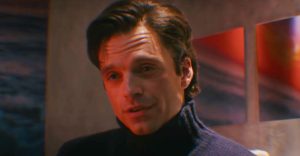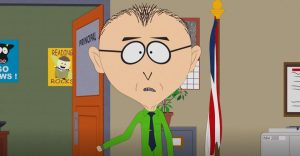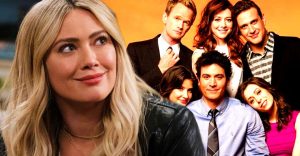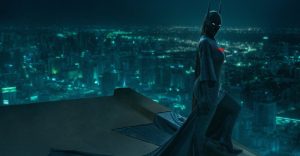10 Reasons Disney’s Sleepy Hollow Is The Most Accurate Telling Of The Story

The Legend of Sleepy Hollow is one of the most time-honored Halloween traditions in American history. The image of Ichabod Crane being pursued by the infamous Headless Horseman is as familiar as candy corn or jack-o’-lanterns. Washington Irving’s famous novel has been adapted over and over, yet the one that stands the test of time seems to be the Disney version.
While the studio is known for taking a few artistic liberties with certain source materials, their adaptation of the tale is actually closer to the original story than most that came after. Maybe it was the script, maybe it was the magic of Disney Animation, or maybe it was a simple love for a classic ghost story.
10 The Storybook Format

Having the film open by presenting the literal opening of a storybook is somewhat of a Disney cliche seen in countless films such as Snow White,Sleeping Beauty, and Cinderella. However, given the fact that the story is an adaptation of a work of American literature, it makes sense.
Sleepy Hollow is a story one would hear around the campfire or would read while curled up with a good book at night. Washington Irving himself even writes in the original text that the story was found amongst someone’s books and papers, and Disney took notice.
9 The Use Of Halloween

On one hand, the story of Ichabod Crane was never meant to be a Halloween story—at least that’s what it says in the original text. The book describes it as a story told on winter evenings, not Halloween. But, because of the images of pumpkins, fall colors, and frequent appearances of ghosts, modern culture has dubbed this the perfect Halloween tale.
That being said, Disney’s use of Halloween in the imagery and presentation of the film works to its benefit. While the holiday wasn’t exactly all the rage in Irving’s time, elements associated with it can be found in both the film and original text.
8 The Length

It might seem strange to mention the length of the film considering that it was pulled from a larger movie, The Adventures of Ichabod and Mr. Toad, but Sleepy Hollow was a short story, not a full-length novel. While Disney certainly added a few things for movie purposes, it doesn’t feel like any of its short time was wasted.
It might be somewhat condensed compared to the original story, but the highlights of the film all happen at some point in the narrative. From the way Ichabod enters the town to his fateful ride against the horsemen, it’s all presented in an accurate, albeit cartoony, fashion.
7 The Narration

While the script is certainly shorter than the text by Irving, at least 80-90% of the dialogue and narration comes directly from the book. Even lines such as Brom Bones wanting to “double-up” Ichabod and lay him out in his own schoolhouse were penned by the original author.
In an age where Disney is often criticized for “Disneyfying” works based on books, it’s quite remarkable to see literal chunks of the text making their way into the script. It certainly helps the adaptation stand up against other interpretations of the tale.
6 The Tone

Along with the accurate narration, the vocal performance from Bing Crosby also helps set the tone of the story. While the crooner might seem like a weird casting decision, the original story takes place in a town that is always accompanied by a drowsy haze, earning it the name Sleepy Hollow.
The tone of the movie can be described as “seasonably mellow,” especially when accompanied by the handful of musical numbers used to move the story. This is also a quality shared by the original book, as Irving’s voice presents the story like a tall tale or yarn. Crosby’s dulcet tones might have been one of the best creative contributions after all.
5 The Small Details

This factor may only apply to those who have read the book, but many small, seemingly insignificant details from Irving’s original work can be seen in the Disney adaptation. It might not seem like a very important feature, but, because the story is so beloved and so frequently read, any amount to go the extra mile really stands out.
Little character details such as Brom Bones’s dog, Ichabod Crane living in the schoolhouse, or Katrina writing the flirtatious postscript on the invitation all appear in the text and serve to flesh out the narrative. Ergo, it makes sense that the animators would include them in their final product.
4 The Characters

It’s so easy to call the cast of animated characters in the film too cartoonish, but, looking back at the book, Irving’s versions were every bit as over-the-top as Disney’s, and that’s practically what made them so memorable in the first place.
Ichabod is gawky and bird-like, Brom Bones is the pinnacle of masculine energy, and Katrina was a flirt before movie star Marylin Monroe was even born. Washington Irving’s characters are caricatures, plain and simple, and Disney took his descriptions and applied them to their distinct animation style.
3 Ichabod Crane

Fans occasionally complain that some characters from literature or other source materials are too difficult to adapt due to the extremely specific descriptions, but that’s not so in the case of Ichabod Crane. Granted, animation allows a lot more wiggle-room than live-action, but Disney’s Ichabod is exactly as Irving describes him in the text.
Ichabod practically comes to life just as the narration pulled from the text describes him as he walks into Sleepy Hollow; from his “nose like a weathercock” and appearance “like a scarecrow eloped from a cornfield,” there’s no mistaking that Disney’s character is indeed a manifestation of Irving’s vision.
2 The Chase Sequence

If there’s one thing anyone exposed to The Legend of Sleepy Hollow can never forget, it’s the climactic chase between Ichabod Crane and the Headless horseman. While Disney’s version does throw in a handful of gags and slapstick scenes to soften the blow, it’s still just as intense and frightening as the sequence that happens in the text.
The appearance of the Headless Horseman might happen a little quicker than it does in the book, but his fearsome presence and galloping speed both make for a seamless transition, as well as a seriously scary scene from the typically family-friendly Disney.
1 The Ending

The ambiguity of the film’s ending is something directly taken from the book. The image of Ichabod’s trampled hat next to the remains of a shattered pumpkin is a haunting frame that suggests the terrible fate of the schoolmaster.
Even with the hopeful image of the rumors of Ichabod’s escape up north with a family and home of his own, the happier ending is quickly dismissed as a theory. As it is in the book, “they knew he had been spirited away by the Headless Horseman.” It’s not exactly the typical Disney ending.
About The Author

















